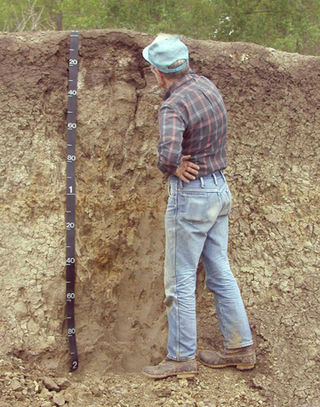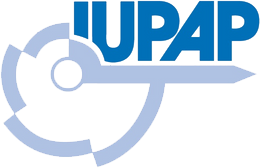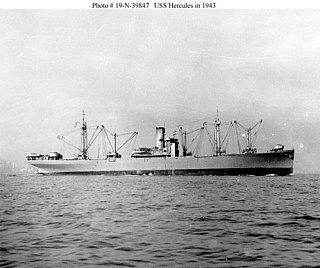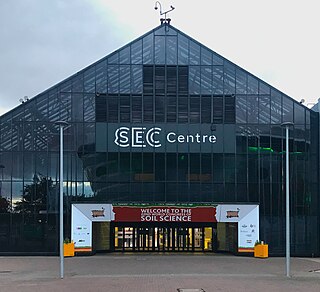
Soil science is the study of soil as a natural resource on the surface of the Earth including soil formation, classification and mapping; physical, chemical, biological, and fertility properties of soils; and these properties in relation to the use and management of soils.

The International Union of Pure and Applied Physics is an international non-governmental organization whose mission is to assist in the worldwide development of physics, to foster international cooperation in physics, and to help in the application of physics toward solving problems of concern to humanity. It was established in 1922 and the first General Assembly was held in 1923 in Paris. The Union is domiciled in Geneva, Switzerland.

The International Union of Geological Sciences (IUGS) is an international non-governmental organization devoted to international cooperation in the field of geology. As of 2023, it represents more than 1 million geoscientists around the world.

Soil classification deals with the systematic categorization of soils based on distinguishing characteristics as well as criteria that dictate choices in use.
The Committee on Space Research (COSPAR) was established on October 3, 1958 by the International Council for Scientific Unions (ICSU) and its first chair was Hildegard Korf Kallmann-Bijl. Among COSPAR's objectives are the promotion of scientific research in space on an international level, with emphasis on the free exchange of results, information, and opinions, and providing a forum, open to all scientists, for the discussion of problems that may affect space research. These objectives are achieved through the organization of symposia, publication, and other means. COSPAR has created a number of research programmes on different topics, a few in cooperation with other scientific Unions. The long-term project COSPAR international reference atmosphere started in 1960; since then it has produced several editions of the high-atmosphere code CIRA. The code "IRI" of the URSI-COSPAR working group on the International Reference Ionosphere was first edited in 1978 and is yearly updated.

The World Reference Base for Soil Resources (WRB) is an international soil classification system for naming soils and creating legends for soil maps. The currently valid version is the fourth edition 2022. It is edited by a working group of the International Union of Soil Sciences (IUSS).
The United Nations General Assembly declared 2008 as the International Year of Planet Earth to increase awareness of the importance of Earth sciences for the advancement of sustainable development. UNESCO was designated as the lead agency. The Year's activities spanned the three years 2006–2009.
The year 2006 was declared the International Year of Deserts and Desertification by the United Nations General Assembly. The Year aims to raise $20 million from industry and governments and will spend half on co-funding research, and half on "outreach" activities. It will be the biggest ever international effort to promote the Earth sciences. Apart from researchers, who are expected to benefit under the Year's Science Programme, the principal target groups for the Year's broader messages are:

Type C3-class ships were the third type of cargo ship designed by the United States Maritime Commission (MARCOM) in the late 1930s. As it had done with the Type C1 ships and Type C2 ships, MARCOM circulated preliminary plans for comment. The design presented was not specific to any service or trade route, but was a general purpose ship that could be modified for specific uses. A total of 162 C3 ships were built from 1939 to 1946.
Neal Menzies is an Australian professor of soil science at Griffith University. In his early adult years, he completed a bachelor of agricultural science (hons) in 1985, a master of agricultural studies in 1987, and a PhD in 1992. Menzies has worked for the International Institute of Tropical Agriculture (IITA) in Cameroon, the Newcastle University in England, the University of Queensland, and Griffith University in Australia

The World Congress of Soil Science (WCSS) is a conference held every four years under the guidance of the International Union of Soil Sciences (IUSS). The purpose of a congress is to: (i) ensure the advancement of soil science and its application, and (ii) to handle the business of the society. Of the 18 congresses, eight have been held in Europe, five in the Americas, three in Asia, one in Australia and one in Africa. The congresses are only open to society members. The number of members attending has steadily increased, with approximately 2000 members attending each congress since the 15th WCSS in Acapulco, Mexico.
Garib Mammadov is an Azerbaijani politician. He served on the National Assembly of Azerbaijan.

The International Institute of Refrigeration (IIR), is an independent intergovernmental science and technology-based organization which promotes knowledge of refrigeration and associated technologies and applications on a global scale that improve quality of life in a cost-effective and environmentally sustainable manner, including:

A Phaeozem in the World Reference Base for Soil Resources (WRB) is a dark soil with a high base status, but without a secondary carbonates within one metre of the soil surface. Most Phaeozems correlate with the Udolls (Mollisols) of the USDA soil taxonomy.

Dan Hardy Yaalon was an Israeli pedologist and soil scientist, who contributed to the fields of arid and Mediterranean pedology and paleopedology, as well as the history, sociology, and philosophy of soil science. Through a research career spanning over six decades (1950–2014), Yaalon was an active member of the International Union for Quaternary Research (INQUA) and the International Soil Science Society. He was awarded the Sarton Medal for his contribution to the history of science, and the Dokuchaev Award.
The International Science Council (ISC) is an international non-governmental organization that unites scientific bodies at various levels across the social and natural sciences. The ISC was formed with its inaugural general assembly on 4 July 2018 by the merger of the former International Council for Science (ICSU) and the International Social Science Council (ISSC), making it one of the largest organisations of this type.
Rattan Lal is a soil scientist. His work focuses on regenerative agriculture through which soil can help resolve global issues such as climate change, food security and water quality. He is considered a pioneer in soil-centric agricultural management to improve global food security and develop climate-resilient agriculture.
The 2022 UCI Para-cycling Road World Championships is the World Championships for road cycling for athletes with a physical disability. The championships took place in Baie-Comeau in Canada from 11 to 14 August 2022.










